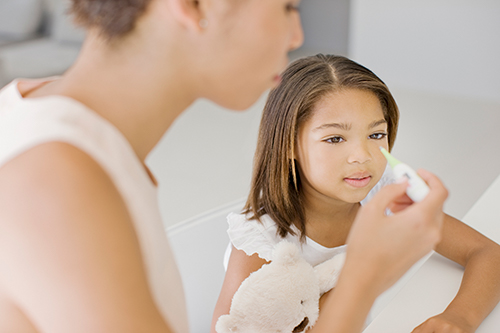Communicable Diseases
Per the Centers for Disease Control and Prevention, “communicable disease means an illness caused by an infectious agent or its toxins that occurs through the direct or indirect transmission of the infectious agent or its products from an infected individual or via an animal, vector or the inanimate environment to a susceptible animal or human host.”
Infection control prevents or stops the spread of infections, and may include standard precaution methods. See below for information related to students with specific communicable diseases and HCPSS procedures. Additional information on communicable diseases in Maryland is available on the Maryland State Department of Education website.
Jump to: Health Checks | COVID | Fever | Vomiting & Diarrhea | Lice
At-Home Health Checks
Parents/guardians are to keep their children home if they are experiencing symptom(s) associated with any communicable disease. See illness and symptom information below for specifics.
For people with chronic conditions such as asthma, the symptoms should represent a change from baseline.

COVID
The Maryland Department of Health and Maryland State Department of Education endorse the Respiratory Virus Guidance issued by the Centers for Disease Control and Prevention for use in schools and child care programs. That CDC guidance shares that COVID-19 health impacts increasingly resemble those of other respiratory viral illnesses, including influenza and RSV, and no longer requires a 5-day quarantine period for COVID-19.
Additional COVID-19 information is available on the Howard County Health Department website.
Fever
High Fever
Maryland State Department of Education and Maryland Department of Health define a fever as any abnormal elevation of body temperature above the normal range of up to 100.0 degrees Fahrenheit orally. Fever often is indicative of an infectious process. Temperatures above 103 degrees may require immediate medical attention. On occasion a subnormal temperature may also indicate an illness.
Students with a High Fever
Students with a temperature of 100 degrees or higher will be sent home and should not return to school until their temperature has remained below 100 degrees for at least 24 hours without the aid of fever-reducing medications like acetaminophen or ibuprofen.
Students with a temperature equal to or greater than 103 degrees who are in the health room for longer than 1 hour may require emergency medical services.
Vomiting & Diarrhea
Vomiting
After an episode of vomiting, the student will be evaluated in the health room. If the child appears unwell, with or without a fever, the parent/guardian will be notified and the student may be sent home. That student should remain home for 24 hours after last episode of vomiting.
Diarrhea
Students with complaints/episodes of diarrhea will be evaluated by the health room. If a child has severe diarrhea (3 or more episodes), with or without a fever, the parent/guardian will be notified and the student may be sent home. Health staff may encourage medical follow up.
Head Lice
Infestations
An infestation of the head by the head louse pediculus humanus capitis. Head lice spend their life cycles on the skin of the human host. Lice are spread by direct contact (head to head) with an infested person and by contact with contaminated articles such as brushes, clothing, bedding, hair bows, etc.
Lice DO NOT transmit any disease and are considered a “nuisance” problem by both the Center for Disease Control and the Howard County Health Department.
Students with Lice or Nits
The school system does not routinely send out school-wide notifications of head lice unless greater than 10% of a population has confirmed live lice.
A student with complaints of an itchy scalp will be evaluated by the health room staff. If live lice are found, the parent/guardian will be notified about the need to treat with a pediculocide. “No Nit” policies are no longer indicated by the American Academy of Pediatrics; therefore, students that present with nits will not be sent home.
Students will be required to show proof of treatment prior to the return of school, including but not limited to the prescription or over-the-counter box. It is important that families follow the instructions provided by the manufacturer. Most products require a second treatment in 7-10 days per the product instructions.
Health Room staff will check any close contacts such as siblings and/or other students with symptoms. Routine screenings are not recommended.